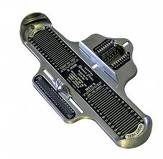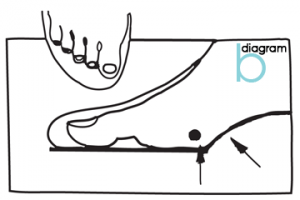 Shoes are meant to support and protect your feet while preventing injury. But to accomplish this, they must fit well. Poorly fitted shoes can cause discomfort and foot problems like calluses, corns, bunions, and hammertoes. This guide will help you determine how to best fit your shoes for your feet while avoiding some common shoe-fitting mistakes.
Shoes are meant to support and protect your feet while preventing injury. But to accomplish this, they must fit well. Poorly fitted shoes can cause discomfort and foot problems like calluses, corns, bunions, and hammertoes. This guide will help you determine how to best fit your shoes for your feet while avoiding some common shoe-fitting mistakes.
- Get your feet measured at least once a year since the size of your feet change as you grow older.
- Measure your feet and try on shoes at the end of the day when your feet are at their largest due to swelling.
- Have your feet measured and try on shoes with the socks you plan to wear with those shoes, such as thin nylons for dress shoes and thicker socks for athletic shoes. Sock weight can play a big role in how the shoe fits.
- Have your feet measured with a Brannock measuring device to ensure you have the correct toe length, arch length, and foot width. Toe length is the total length of your foot from your heel to your longest toe. Arch length is the measurement from your heel to the ball joint (1st metatarsal joint) of your foot. Foot width is the width across the ball of your foot from the 1st to the 5th metatarsal joints that determines how narrow or wide your shoe fit should be.
- Make sure you have both feet measured, since most people have one foot that is larger than the other. You should have your shoes fitted to the largest foot. The smaller foot’s shoe may be altered to assure proper fit.
 Your arch length is your reference point when choosing a size. In correctly fitted shoes, the arch of the shoe and the ball joint of the foot will be properly aligned. (This diagram shows a properly fitted shoe for correct foot and shoe flexion.) The ball of your foot should fit snugly, but comfortably, in the ball joint area (sometimes referred to as the cradle) of your shoe. Your foot and shoe should bend at the same location, and your arch should be fully supported. Shoes that are improperly fitted and too short for the arch length will confine your toes and cause foot discomfort and fatigue. This will also attribute to an improper gait.
Your arch length is your reference point when choosing a size. In correctly fitted shoes, the arch of the shoe and the ball joint of the foot will be properly aligned. (This diagram shows a properly fitted shoe for correct foot and shoe flexion.) The ball of your foot should fit snugly, but comfortably, in the ball joint area (sometimes referred to as the cradle) of your shoe. Your foot and shoe should bend at the same location, and your arch should be fully supported. Shoes that are improperly fitted and too short for the arch length will confine your toes and cause foot discomfort and fatigue. This will also attribute to an improper gait.- Select shoes that conform to the natural shape of your foot. Shoes with a tapered-toe-box shape work well on slender, tapered feet. Shoes with a square toe box fit better on broader feet.
- Try on both shoes. Don’t rely on the sizes marked on the box or inside the shoe, since shoe sizes can vary by manufacturer, brand, and style. Determine how the shoes fit and feel on your feet, and then make your decision to buy.
- Stand and walk around in both shoes to make sure they fit and feel comfortable. There should be 3/8” to 1/2” of space between your longest toe and the end of the shoe. You should be able to wiggle your toes in the shoes.
- When walking, check for foot sliding and slipping within the shoe. The foot will feel more secure in a properly fitted shoe, reducing any sliding within the shoe or heel slippage.
- Don’t buy shoes that are too tight and expect them to stretch to fit your feet later. They probably won’t.
- Visit a Pedorthic shoe store for a professional, personalized shoe fitting if you have any foot problems. A thorough shoe fitting/buying consultation may take up to 1 hour.
- If you have foot conditions or gait issues, you may want to purchase ezWalker® Performance Insoles for your shoes. Custom-made, biomechanically designed insoles, like the ezWalker®, can realign your body by providing your feet with a proper foundation in your shoes. The ezWalker® Performance Insole also helps reduce or eliminate foot pain. No matter what type of shoes you need to wear, there is an ezWalker® to help you maintain all-day comfort and pain relief. Order your ezWalker® Performance Insoles today.
- Refer to the Shoe Fitting Guide and Shoe Fitting Pointers at the WalkEzStore for more information on foot measurements, shoe sizing, and how to obtain a proper shoe fit – especially with ezWalker® insoles.
Put an ezWalker® in your shoes and put a smile on your face. Remember… when your feet feel good you feel good!
Note: This information is based on US sizes. Click here to view a conversion chart for European and UK sizes.

